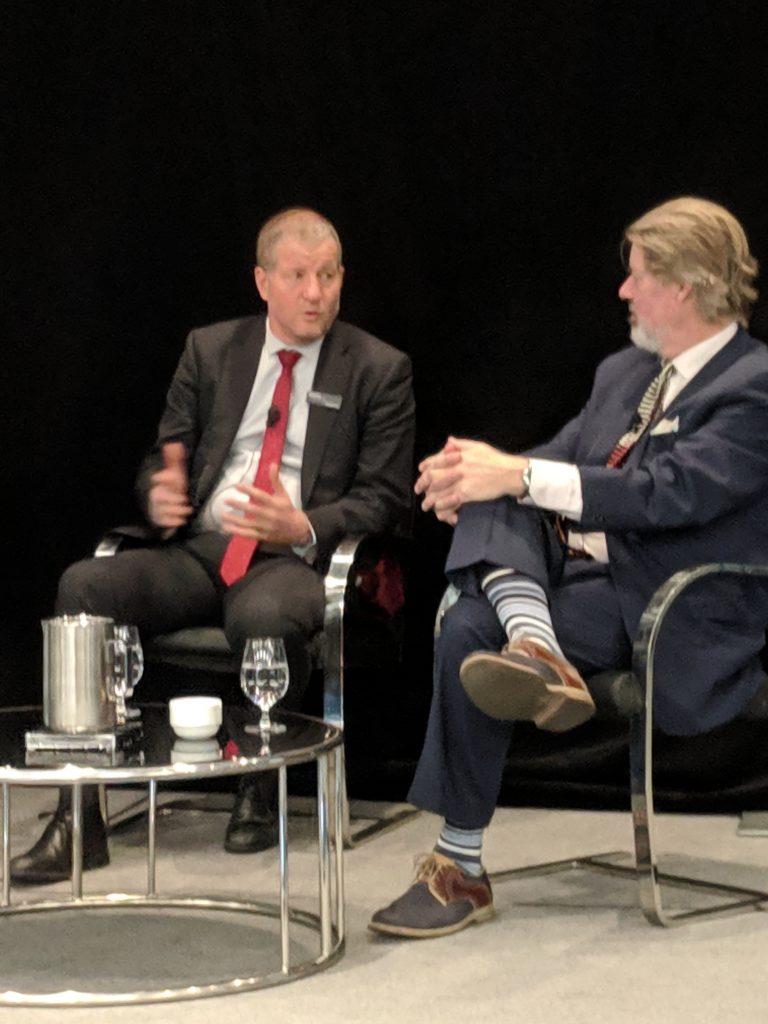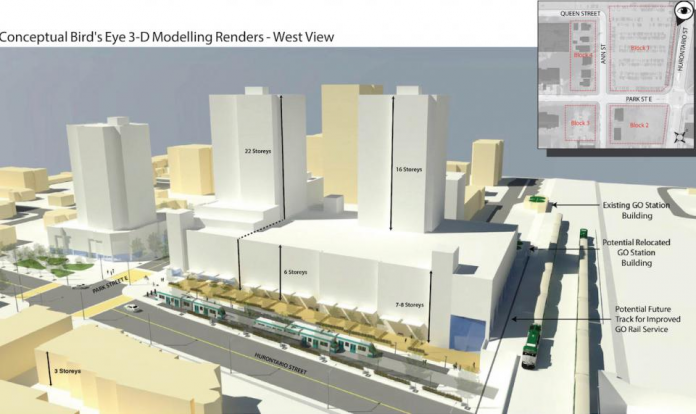Metrolinx’s CEO and president anticipates $5 billion in new construction work annually for the next two decades as the transit system operator expands its reach in the Greater Golden Horseshoe and Hamilton areas.
Phil Verster, who has been leading the transit organization since October, 2017, says this high volume of work will require co-ordination and co-operation with the private sector.
He says that in the past year “our output is about 50 per cent higher in the amount of work done, (representing) about $4 billion of works Metrolinx has done this year.”
Speaking to a breakfast gathering of construction company owners and exhibitors at the Buildings Show, he said: “I believe in contracting you don’t have winners or losers. You have both parties win or both parties lose, but it is very rarely when one party wins and the other loses.”
However, there are still improvements to be made, especially with safety practices. He has seen serious violations even when he visited sites (with advance notice) with the project delivery company’s leadership.

“That means to me, very bluntly, that people are not reckless, but people who employ these people are not as focused on safety as they should be.”
Verster, with international experience on a diversity of projects including his original country of South Africa, the United Kingdom as well as other overseas nations, says solid safety practices are not just good for the workers involved — they indicate that the contractor has solid systems and processes, with “really good material management, site management and really good control over subbies.”
Accordingly, he expects Metrolinx will include a review of previous safety records in evaluating contractors for future project opportunities.
He also said he is pressing forward with an initiative to link new transit stations with private developers, who will fund the stations’ construction as they benefit from the traffic they generate
“In the past, the government approached building transit stations as something we are just going to fund as a province,” he said. “I have a very strong view that Metrolinx should not be building new stations – but we should be facilitating new stations being built by the private sector.”
This approach will allow Metrolinx to share in the increased land value associated with the transit development, and ensure a sustainable system.
The Transit Oriented Development (TOD) model for new stations has resulted in a pause in the “delivery process” of some new stations.
In a letter to the Niagara Region received the day of his Buildings Show speech, Verster cited a recent statement by Minister of Transportation Jeff Yurek that the provincial government is seeking third-party investment to build new GO stations in Ontario.
“Not only can this approach save tax dollars and exponentially grow transit ridership, it will create and leverage the true value of transit and deliver much more than just transit stations; it will deliver local integrated built environments that offer the services people want at the doorstep of where people will live, work and play.”
“We move people today,” Verster told the construction executives in his presentation. “We’ve increased our seat miles in service by 20 odd per cent.” There will be growth to the extent that by 2031, he anticipates Metrolinx will be moving between 150 and 170 million people per year. “They want comfort, they want to eat, they want WiFi on the trains, and they want a good experience,” he said.
Verster says he is eager and open to listening to observations and proposals from the industry.
Among changes he is making is improving the tendering information quality. He said he aims to operate Metrolinx as a “responsible owner that understands business interests.”
“I’m not happy where we are,” he said. “It’s not where we should be.”
Contracts should be designed to be suitable each project. For example in one case, he found that one contract included both minor works at a station, and three parking garages.
This sort of combination doesn’t make sense, he said, since the contractor who would excel at the minor works may not be the same as the organization best suited to building the parking garages.
Verster said there is a need to demonstrate the business case for transit development, where “for every $10 billion we invest in GO expanding to places like Kitchener, Niagara, Hamilton and the like, we get $26 billion back over 60 years, in net present value.” Much of the revenue will come from fares, but other money will be collected from advertising and retail at the stations, among other sources.
It is important to be willing to invest money for the future and not just focus on cost reductions, he said.
Verster says relationships have improved with Infrastructure Ontario (IO), and now Metrolinx and IO are working as a team in devising the best procurement and project approaches.
Contracts increasingly are being designed with performance requirements rather than detailed specifications, he said.
For example, “what we really want is eight trains an hour on the Stouffville line, . . . I don’t really mind what the infrastructure look like.” So Metrolinx may provide a reference concept and design but the bidders can determine the bet ways to innovate and achieve the desired results.
“We do not specify on the GO expansion not to say what trains to buy. I just want the capacity for so many trains per hour. I don’t specify the signalling system, just say what we want and let the market say these are the options you have.
He said Metrolinx is keeping abreast of technology including the Internet of Things and the trend towards autonomous vehicles. If self-driving vehicles become common, then what will happen with Metrolinx’s 77,000 parking bays in its garages?
“Vehicles will have to be charged and start somewhere,” he said. “They can park in the garage overnight, and get charged up. Can we turn that into a business proposition? That’s the future where we are going to go.”
“For the kiss and ride, the drop off zones at stations, we are starting to adjust the design models, to adjust to what the autonomous vehicles will bring to the future.”

